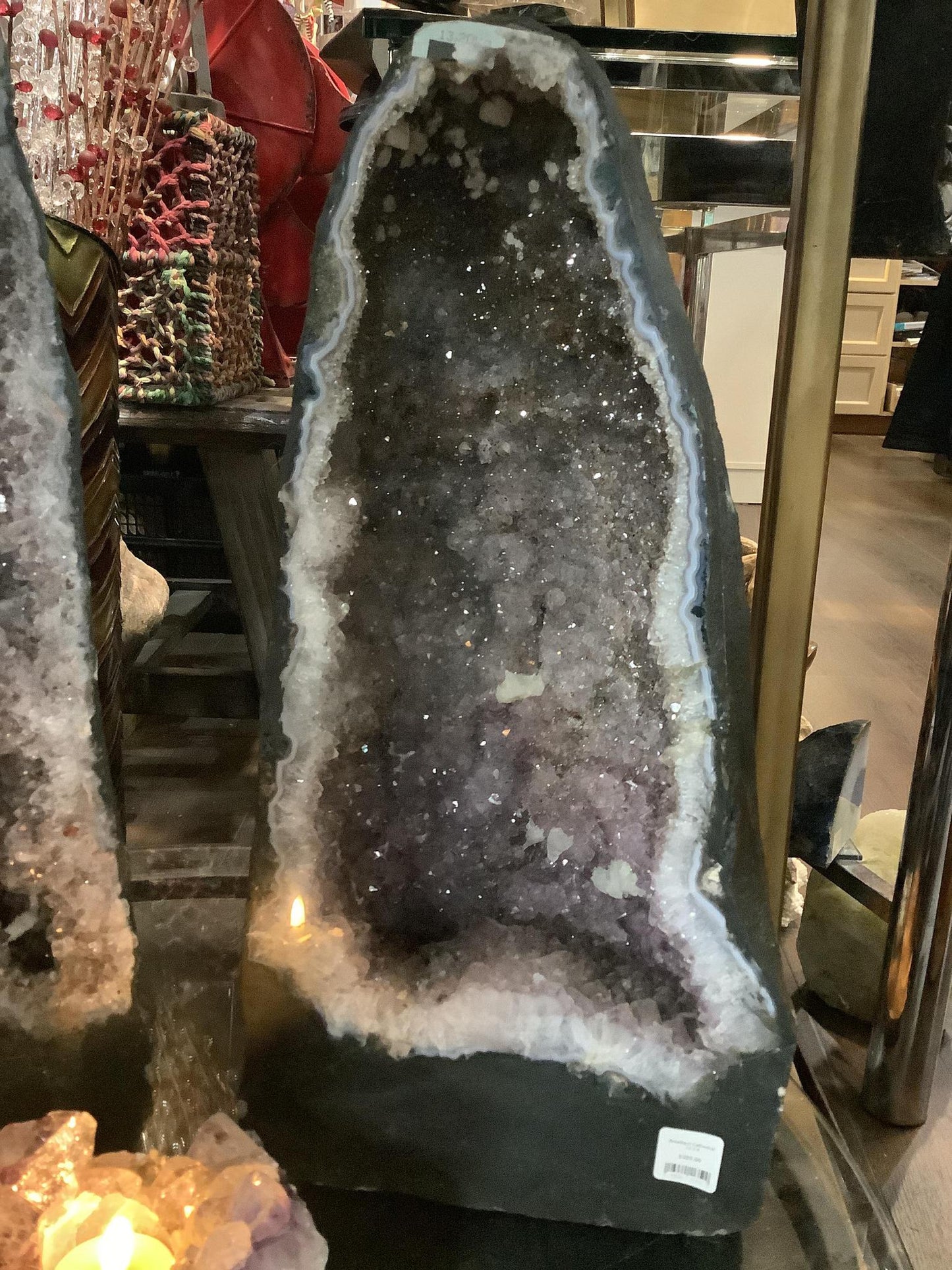zitazone
Amethyst Cathedral 13.2 K
Amethyst Cathedral 13.2 K
Couldn't load pickup availability
Amethyst cathedrals, with their mesmerizing beauty and intricate formation process, represent a geological marvel that continues to captivate and inspire. From their origins within volcanic voids to their emergence as stunning geological formations, these natural wonders embody the elegance and complexity of the Earth’s geological processes. Whether cherished as collector’s items, appreciated for their metaphysical properties, or admired as interior decor, amethyst cathedrals stand as testament to the extraordinary artistry of nature, encapsulated within their captivating crystal-lined interiors and regal shades of purple.cathedrals originate within geodes, which are hollow rock cavities lined with crystals. The formation of geodes and the subsequent growth of amethyst crystals within them are a remarkable geological process involving several key stages:
1. Volcanic Activity:
The journey of an amethyst cathedral begins deep within the Earth’s crust, where volcanic activity plays a pivotal role. Volcanic eruptions release molten rock, known as magma, which contains various minerals, including quartz.
2. Formation of Voids:
During volcanic eruptions, gases escape from the magma, creating cavities or voids within the surrounding rock. These voids can range in size from small hollows to sizable caverns, depending on the specific geological conditions.
3. Precipitation of Minerals:
As the volcanic activity subsides and the magma cools, the minerals dissolved in the heated fluids within the voids begin to precipitate out of the solution. Quartz is one of the minerals that frequently precipitate in this manner, due to its abundance in the Earth’s crust.
4. Crystal Growth:
Quartz crystals, including amethyst, start to grow within the voids as mineral-rich solutions saturate the cavity. The growth of amethyst crystals is a slow and intricate process, involving the repeated deposition of quartz molecules on existing crystal surfaces. The presence of iron impurities imparts the characteristic purple color to these crystals.
5. Internal Pressure:
As the crystals continue to grow, they exert internal pressure on the cavity’s walls, gradually enlarging the space within. This process can take millions of years, allowing the amethyst crystals to achieve their impressive sizes.


